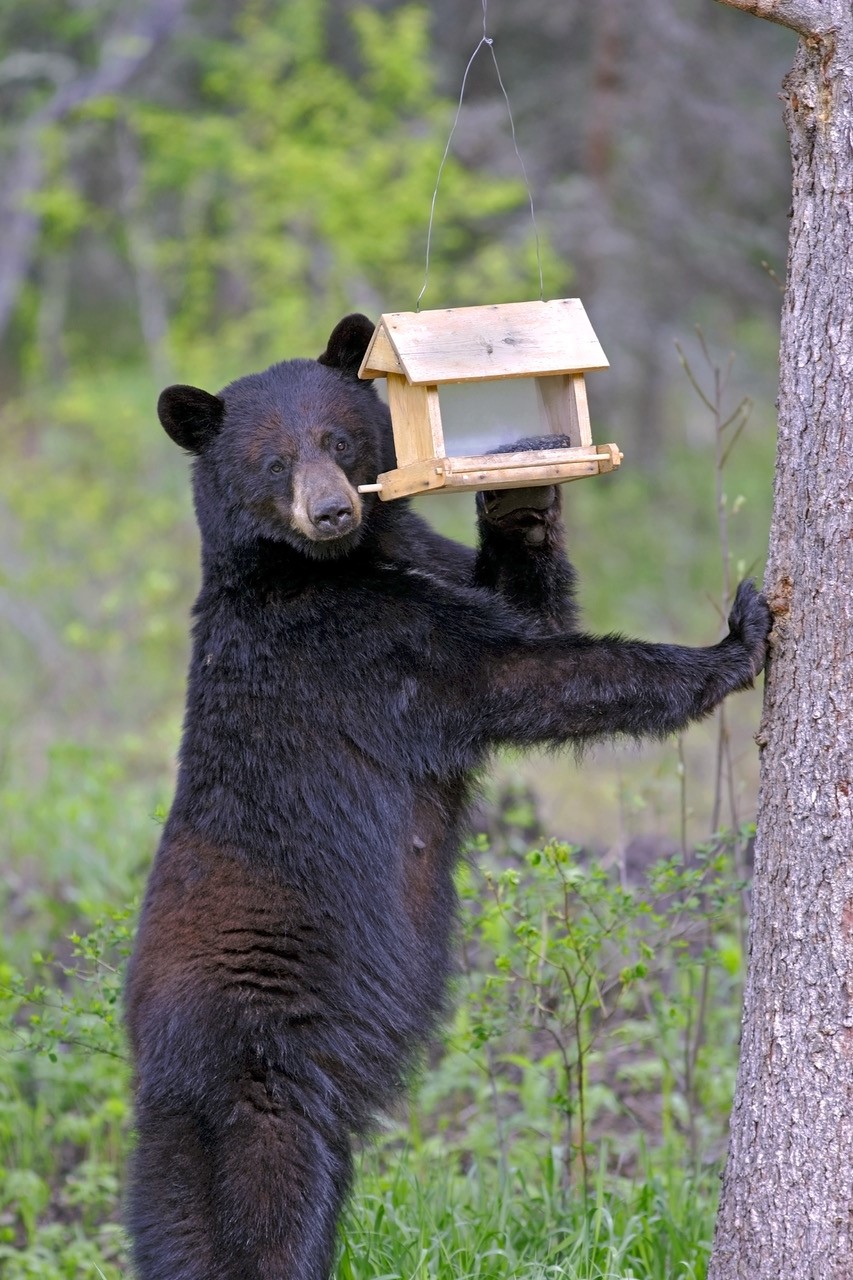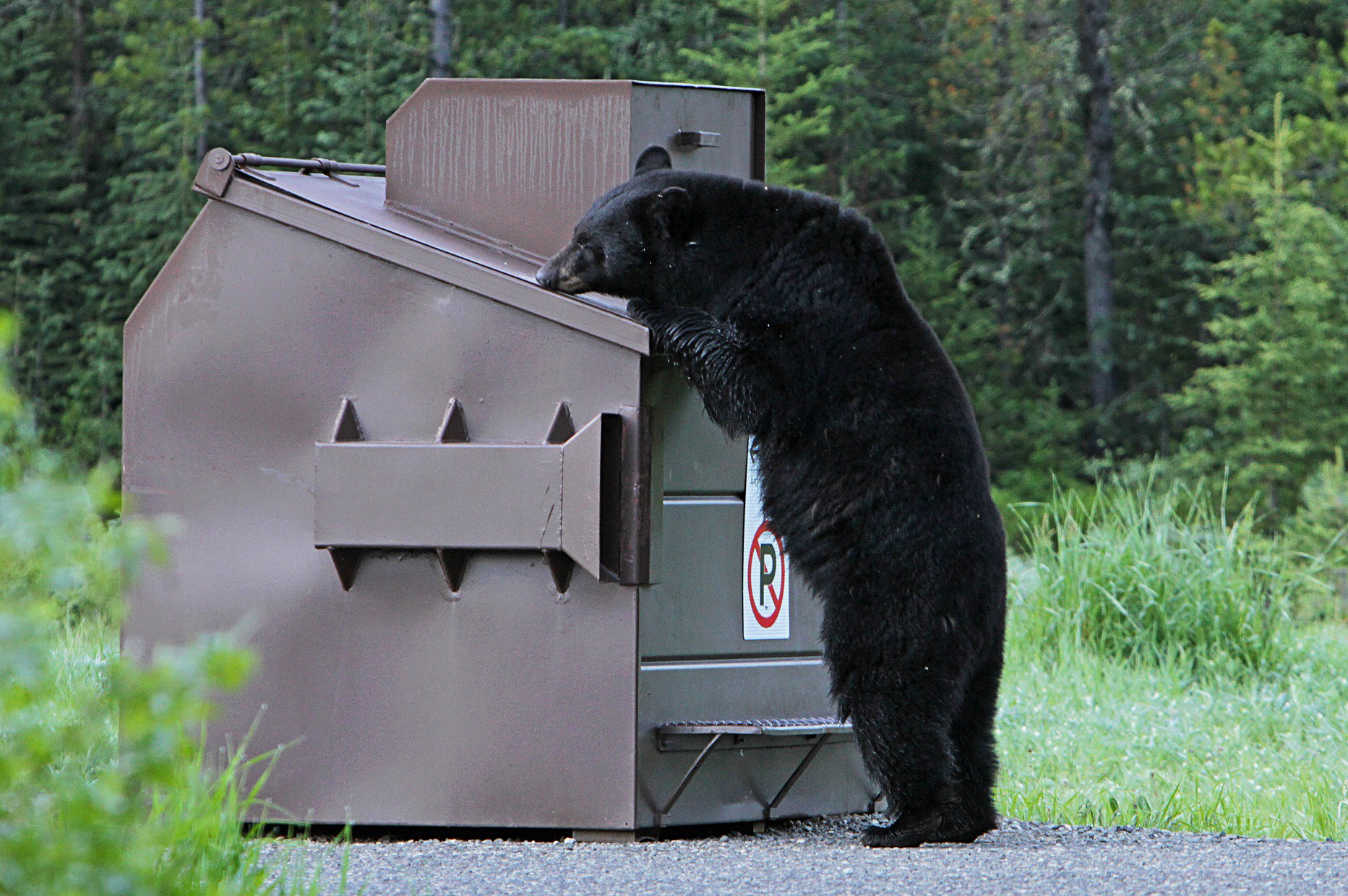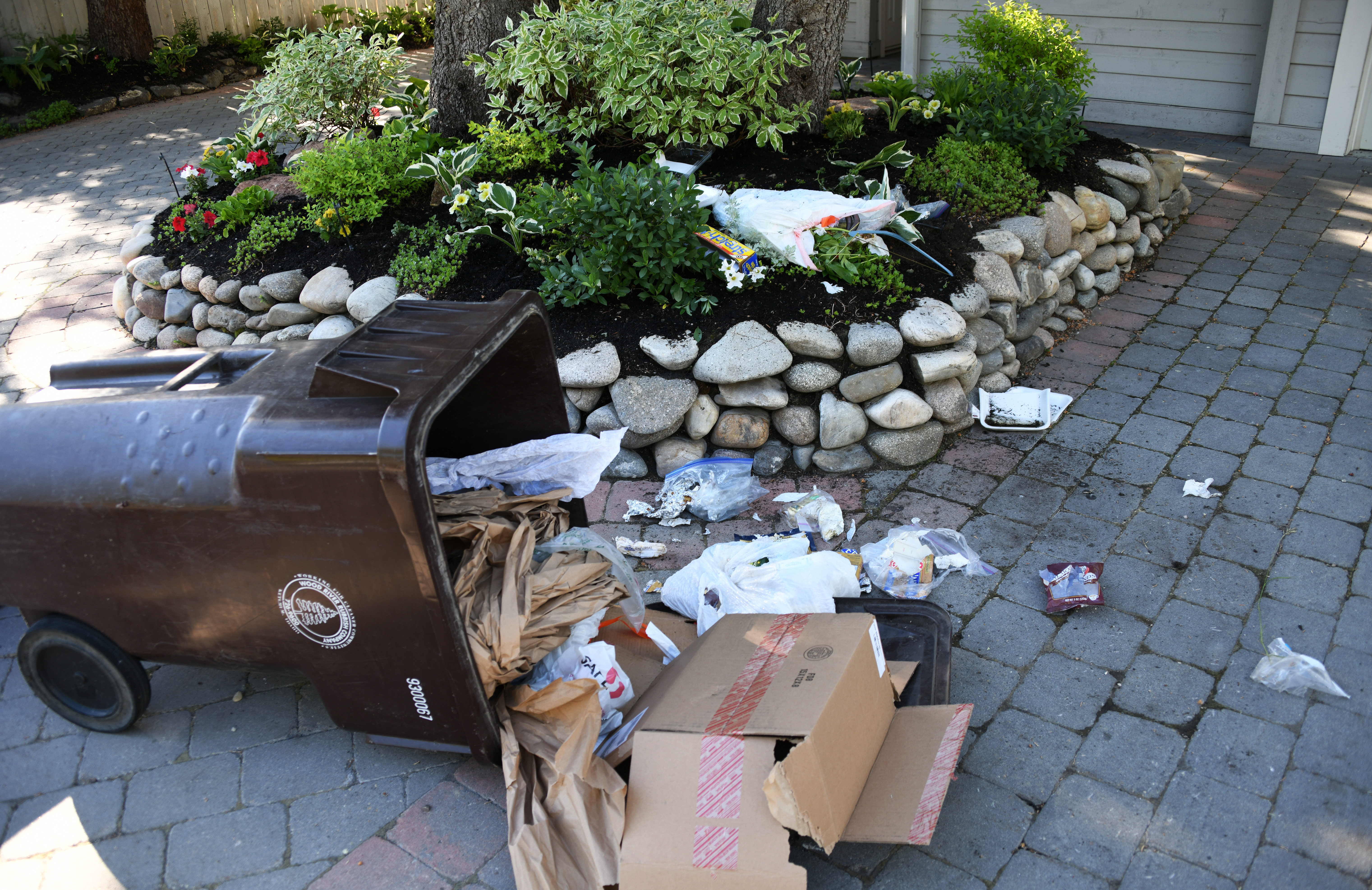In late August, Idaho Fish and Game staff in the Southwest Region received multiple reports about a black bear breaking into homes in Crouch, with conflicts centered around the Castle Mountain and Terrace Lakes neighborhoods.
"This bear in Crouch has actually broken into area residences seeking and obtaining food rewards, which is obviously concerning behavior," said Regional Wildlife Manager Ryan Walrath. "We are currently working to trap this animal, but want area residents to be aware that there are measures they can take to help prevent 'bad' bear behavior from escalating to this point, or from happening in the first place."
With fall approaching, Idaho’s black bears are on the move and preparing for denning season, seeking out and gobbling up food to help them pack on the pounds.
This annual race to put on as much weight as possible before going into hibernation begins in mid-summer and lasts into early fall. Not coincidentally, this time of year is when Fish and Game staff receive the most reports of human-black bear conflicts in Boise County neighborhoods and elsewhere in Idaho. In most cases, the conflicts arise from human behavior more so than bear behavior.
Conflicts happen when bears score an easy meal in town
Heading into the winter, black bears can pack on as much as 30 pounds per week and add about 4-5 inches of body fat prior to denning. To do that, they need to consume around 20,000 calories per day, so bears are continually on the hunt for food that’s high in protein and fat.
In more rural towns like Crouch, which are located on the urban-wildland interface and sit right in the middle of bear habitat, bears will always move through town looking for good smells and food. Unfortunately, they often find human food sources – such as garbage, pet food or bird feeders – all of which are high in calories and readily available. That’s when the problems start.

“In the vast majority of cases, it's not a bear problem – it's a people problem. Bears are being provided with an easy meal and becoming habituated to humans, and that's when we see unwanted and unsafe bear behaviors escalate,” Walrath said.
It usually goes from bad to worse
Finding food inadvertently provided by people is bad for bears and people, and it often ends with a dead bear because when the animals find a regular food source in neighborhoods, they become less fearful of people.
“They can grow impatient or even pushy in their search for food and may not leave when you try to scare them away, because the promise of food overcomes their fear of people,” Walrath added. “And that is a dangerous situation.”
When it becomes evident that a bear has become excessively habituated to that food source, or has lost its wariness of humans (such as the bear breaking into homes in Crouch), biologists and conservation officers often have no choice but to trap and kill the bear. In cases like these, the habituated bears cannot be moved, because research shows they will quickly travel long distances to seek out human foods in their new locations.
“We cannot responsibly move a habituated bear knowing it will likely visit the nearest campground or neighborhood and cause a potential safety hazard,” said Regional Supervisor Josh Royse. “We use the adage, ‘A fed bear is a dead bear,' because whenever a bear becomes habituated, that is almost always the only option. It's not a part of the job that any of us enjoy, but it is almost always the only appropriate course of action in the interest of public safety.”
Keeping bears wild and away from homes takes effort and cooperation
Luckily, there are a lot of things that people can do to prevent black bears from becoming habituated, protecting both the residents in their neighborhood and the black bears moving through it.

The key to keeping Idaho bears wild is to not allow them to access human food sources around neighborhoods and homes. Black bears have been roaming North America for the last 500,000 years – they are well-equipped to survive without human food by foraging primarily on grasses, buds, forbs, insects, berries, and occasionally meat.
Bears are extremely intelligent and can learn very quickly to associate people with food. The presence of unsecured human food sources like residential garbage, bird feeders, dog food, chicken coops, or even fruit trees causes human/bear conflicts that rarely end well for the bears, and often means a messy, and likely unsafe, situation for a property owner.
"This is why we put so much emphasis on preventing bears from getting food rewards from humans. Once the bear becomes habituated, which can happen after getting into unsecured garbage can only a handful of times, almost without fail, our only option is to euthanize the bear," Royse said. "We absolutely don’t want to see that outcome. For this reason, you continually see us implore the public to do everything they can to not contribute to the problem.”"

Following the steps below helps protect both you and the bears:
- Remove bird feeders between April and mid-November
- Feed pets inside
- Get a bear-resistant trash can and use it properly; don’t tamper with latches, prop them open, or over fill them. If you don’t have a bear-resistant can or if there is too much trash to fit in the can, keep it in a garage until the morning of pickup.
- Do not keep coolers, refrigerators, or freezers outside
- If a bear has already visited your place and found food, take the above steps right away. The bear will likely pay you a couple more visits, but if it finds no food, it will eventually move on
- Boise County residents can report bear problems to Fish and Game staff in Nampa so that they can monitor the situation: (208) 465-8465

